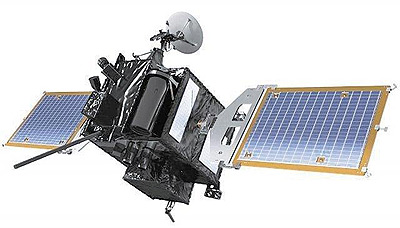Thank you very much for visiting Gunter's Space Page. I hope that this site is useful and informative for you.
If you appreciate the information provided on this site, please consider supporting my work by making a simple and secure donation via PayPal. Please help to run the website and keep everything free of charge. Thank you very much.
KPLO (Danuri)

KPLO [KARI]
The KPLO (Korea Pathfinder Lunar Orbiter) or Danuri (다누리) lunar orbiter mission is South Korea's first lunar mission. It is developed and managed by the Korea Aerospace Research Institute (KARI).
KPLO carries an instrument suite consisting of six payloads, five from KARI and one from NASA:
- Lunar Terrain Imager (LUTI) LUTI will take images of probable landing sites for the 2nd stage lunar exploration mission and special target sites of the lunar surfaces with a high spatial resolution (<5m)
- Wide-Angle Polarimetric Camera (PolCam) PolCam will acquire the polarimetric images of the entire lunar surface except for the polar regions with medium spatial resolution in order to investigate the detailed characteristics of lunar regolith.
- KPLO Magnetometer (KMAG) KMAG will measure the magnetic strength of the lunar environment (up to ~100 km above the lunar surface) with ultra-sensitive magnetic sensors.
- KPLO Gamma Ray Spectrometer (KGRS) KGRS will investigate the characteristics of lunar resources including rare elements, minerals, etc., and map the spatial distribution of the elements.
- Disruption Tolerant Network experiment payload (DTNPL) DTNPL will take space communication experiment based on disruption tolerant network technology.
- NASA's ShadowCam will map the reflectance within the permanently shadowed regions to search for evidence of frost or ice deposits. The instruments optical camera is based on the Lunar Reconnaissance Orbiter Narrow Angle Camera, but is 800 times more sensitive, allowing it to obtain high-resolution, high signal-to-noise imaging of the moons permanently shadowed regions. ShadowCam will observe the PSRs monthly to detect seasonal changes and measure the terrain inside the craters, including the distribution of boulders.
The launch was planned for the end of 2020, but has been delayed to August 2022. SpaceX will launch KPLO on a Falcon-9 v1.2 (Block 5) from Cape Canaveral. KPLO was originally to enter a circular polar orbit around 100 km above the moon. In 2019 due to increasing mass from 550 kg to 648 kg, KARI changed the orbit to a 100 km × 300 km elliptical orbit, leading to a disagreement with NASA, as this orbit would not allow the NASA's instrument to achieve its science goals.
| Nation: | South Korea |
|---|---|
| Type / Application: | Lunar orbiter |
| Operator: | KARI |
| Contractors: | KARI |
| Equipment: | LUTI, PolCam, KMAG, KGRS, DTNPL, ShadowCam |
| Configuration: | |
| Propulsion: | 4 × 30 N monopropellant thrusters, 4 × 5 N monopropellant thrusters |
| Power: | 2 deployable solar arrays, batteries |
| Lifetime: | 1 year (on orbit) |
| Mass: | 678 kg |
| Orbit: | 100 km × 300 km, 90° lunar orbit |
| Satellite | COSPAR | Date | LS | Launch Vehicle | Remarks | |
|---|---|---|---|---|---|---|
| KPLO (Danuri) | 2022-094A | 04.08.2022 | CC SLC-40 | Falcon-9 v1.2 (Block 5) |
References:
- KAIST: Introduction to Korea Lunar Exploration Program and KPLO Mission, August 2016
- KAIST: Korean Pathfinder Lunar Orbiter (KPLO) Status Update, 10 October 2017
